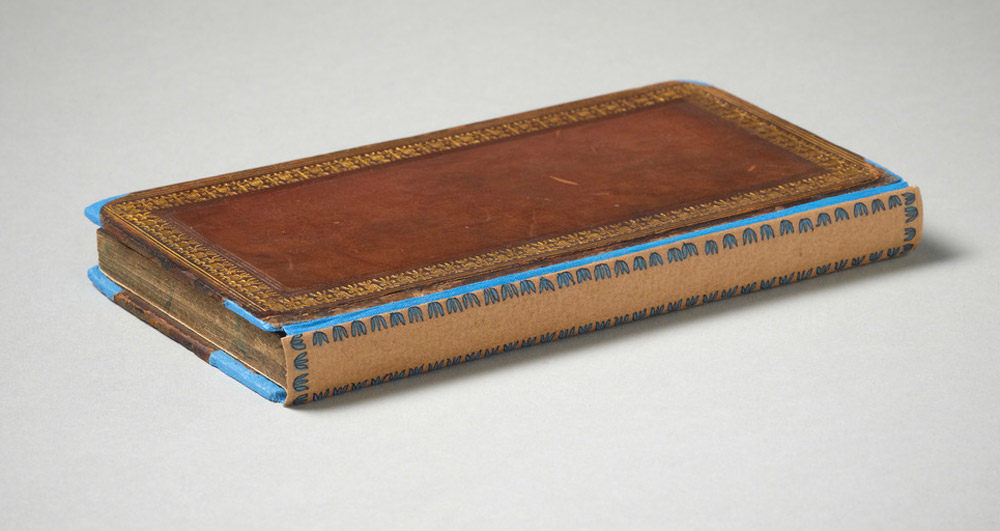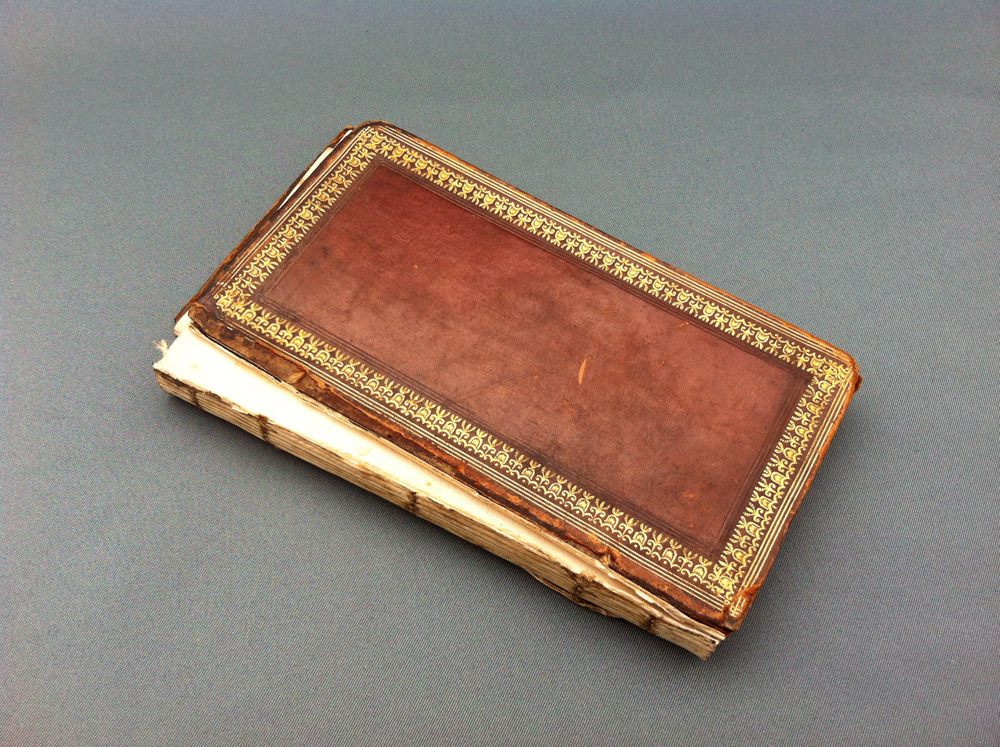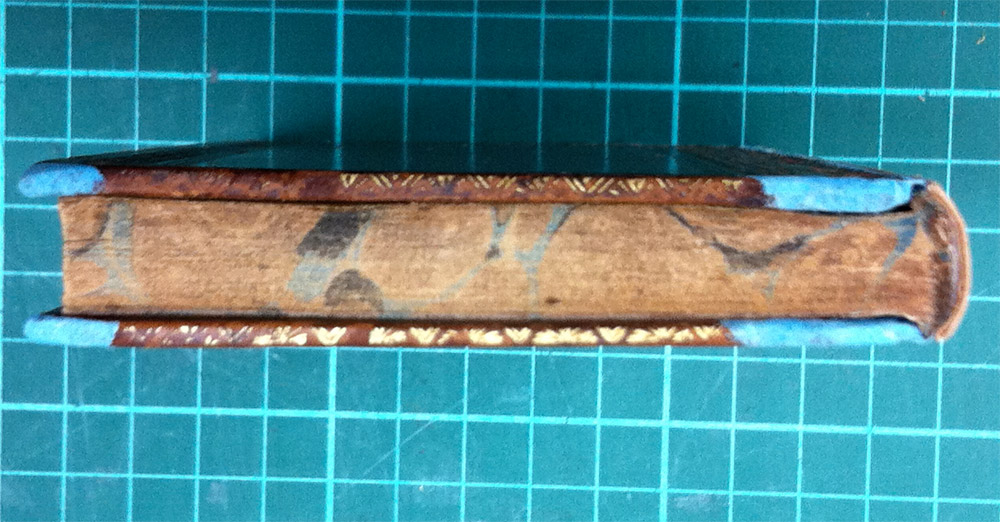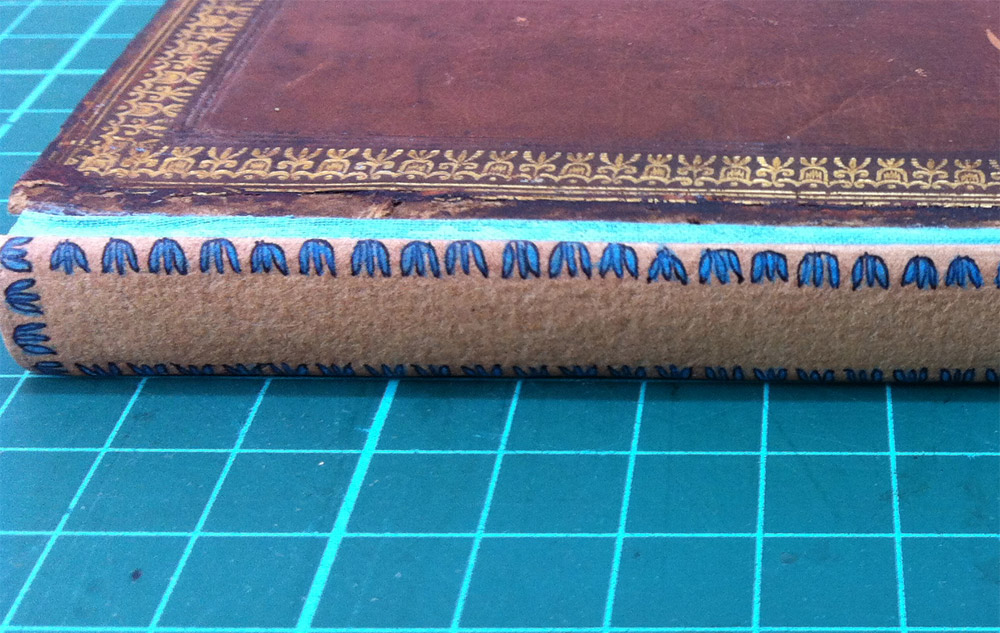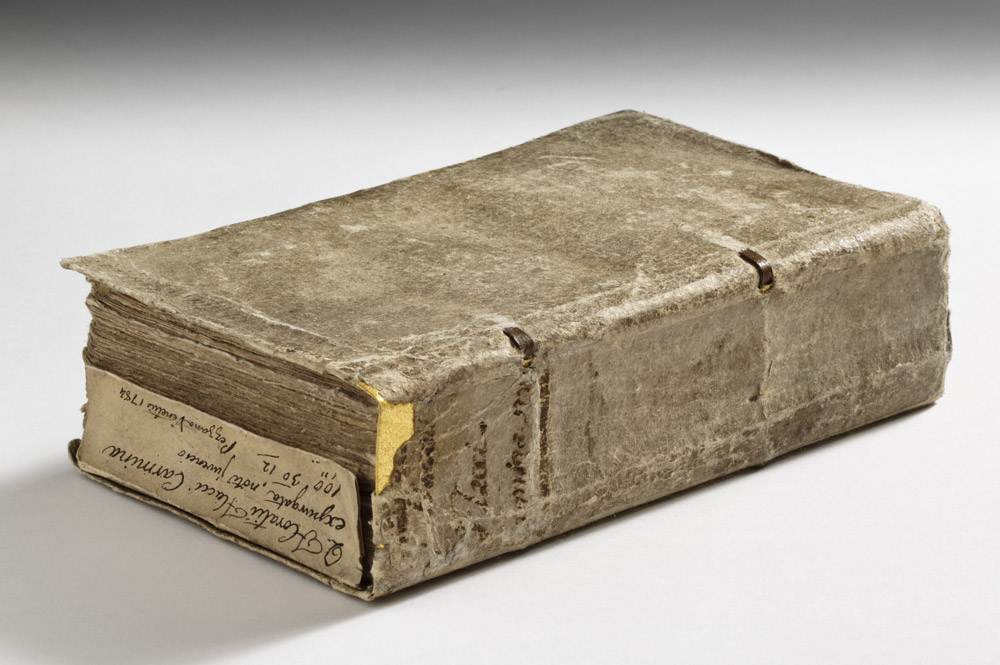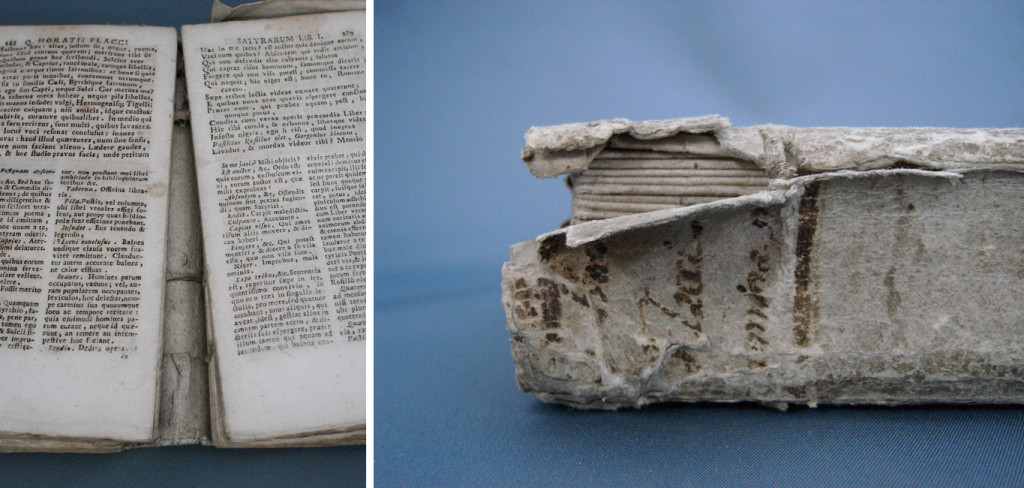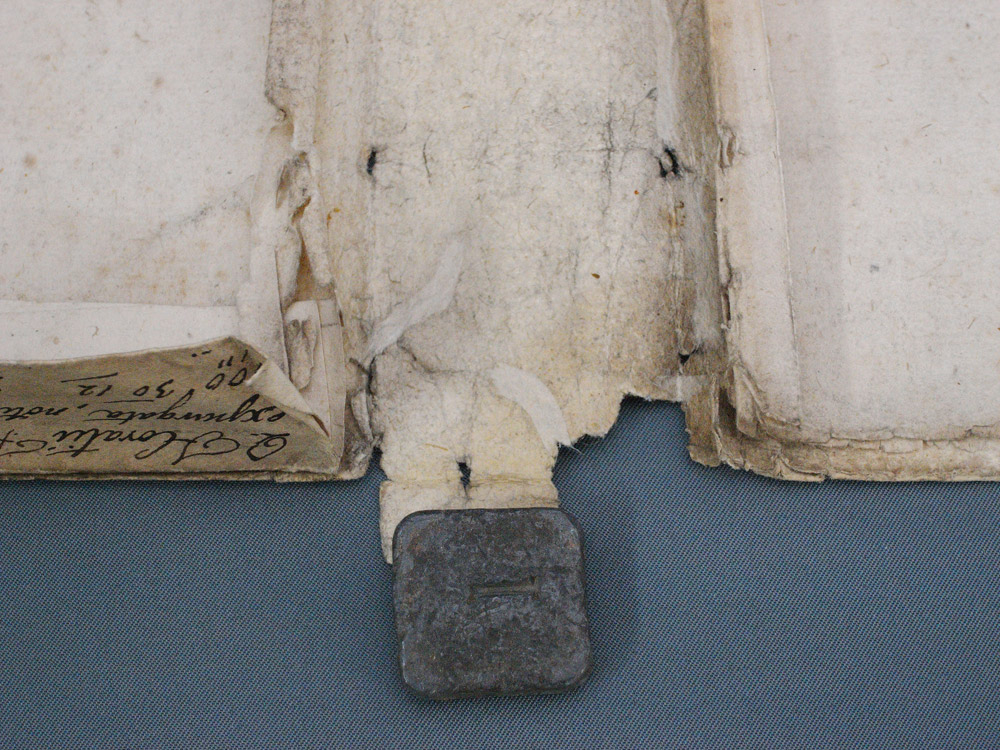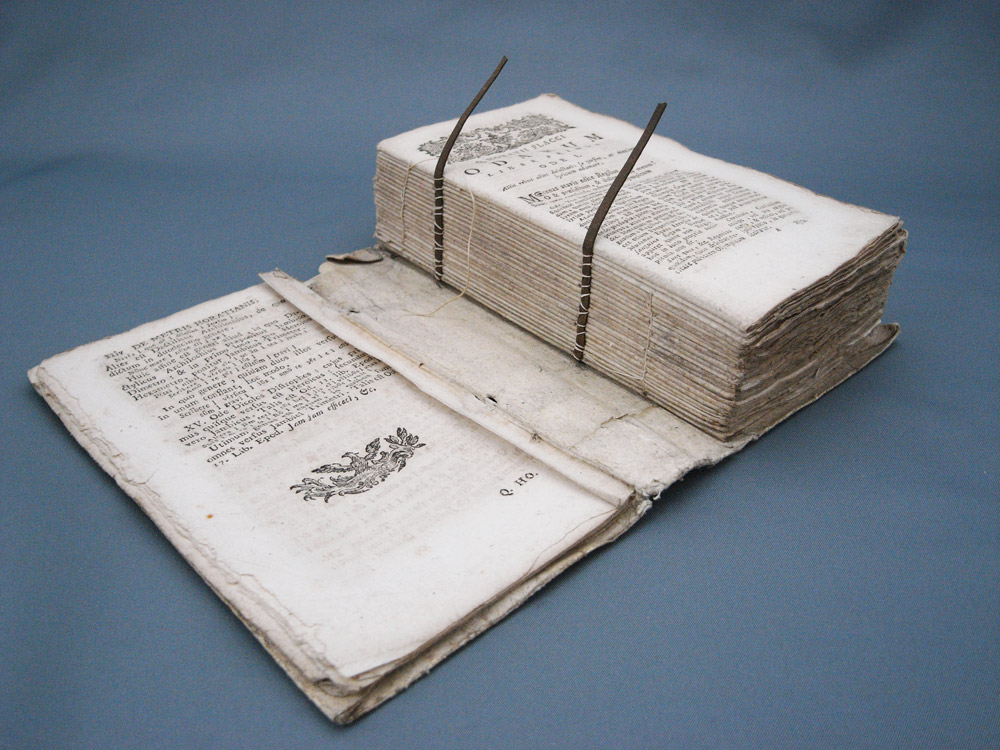In the interview at the beginning of the month, I asked Kathy Abbott about Tomorrow’s Past, an exhibit inspired by Sün Evrard’s article in The New Bookbinder, Volume 19. The idea is to rethink the approach of repair work in a contemporary and more visible way. In this post Kathy explains the treatments for two bindings and why she chose to do these repairs in an unconventional way.
I’ve chosen a selection of bindings from your Tomorrow’s Past portfolio. I find the treatments to be delightful yet still respectful to the bindings historic value.
Thank you. I could never undertake this sort of conservation treatment if I hadn’t worked for 9 years as a book consevator and bindery manager at the antiquarian booksellers: Bernard Quaritch Ltd. I learned so much there about antiquarian books and from working on such a wide variety of them, each with very individual needs. I continue to conserve antiquarian books as well as Islamic manuscripts, where I constantly have to stretch my skill base in order to do the right thing for the book in my care. This allows me to have a lot of tacit knowledge at my fingertips when I approach my Tomorrow’s Past work.
In the treatment of Sacred Dramas (1818) you’ve included this brightly hand-colored tissue that is quite a stark contrast from the original covering material. What was the prior condition of the book and why did you choose, what could be perceived as an unconventional route of conservation?
I made this work for a Tomorrow’s Past exhibition at the Aram Gallery, London, in 2013.
I found the book with both boards detached and no spine, and I spent a lot of time looking and handling the book before I decided on the course of action. The book’s sewing was intact and each edge was marbled, so I didn’t want to disturb it by re-sewing. The book didn’t open well, so I reattached the boards with linen and they now open right back and touch each other at the spine. I didn’t want a heavy spine that would impede the book’s opening even more, so decided on a sort of hollow, made from handmade paper but the head and tail of the spine has a little flap which tucks down inside the hollow, so that it doesn’t have a vulnerable cut edge. The decoration on the spine is hand drawn with acrylic inks, to relate to the decorative gold tooling on the boards. The boards themselves were quite damaged and needed to be repaired, so I decided to highlight both the board attachment and every repair, with the same bright blue colour that appears within the marbled edges on the book-block. The re-binding of this book came the year after conserving Q. Horatii Flacci Carmina Expurgata, where I first explored the concept of highlighting the repairs and it felt absolutely like the right thing to do. It has caused a lot of controversy though: people either love it or hate it.
– – – – – – – – – – –
The repair on the binding of Q. Haratii Flacci Carmina Expurgata (1784) is subtle yet stunning. Can you walk us through the steps: was the book resewn and how was the hand-gilded paper used to repair the binding?
This poor book was in such bad shape when I found it but I absolutely loved its original binding and thought it was essential to keep every last crumb of it. My good friend is a Kintsugi restorer: this is where broken Japanese ceramics are repaired with lacquer and the repairs are highlighted in real gold or silver powder, rendering the piece even more beautiful. I thought that this particular book would really benefit from this sort of treatment.
The sewing was broken in many places and the alum-tawed thongs were very brittle and had snapped in several places, making them unusable. I didn’t want to use new, white thongs, as they would look very bright and at odds with the rest of the book, so decided to dye some alum-tawed skin dark brown to match the titling, using conservation leather dyes.
I pulled the book and then repaired the tears in the cover with Japanese tissue, the text-block did not need to be guarded nor repaired. I then re-sewed the book following the original sewing positions. I gilded a piece of hand-made paper with 23.5 carat gold leaf and the piece was then inserted under the turn-ins of the cover and was adhered to the original turn-ins only, using methylcellulose.
The sewing of the front section to close the binding was very complex: the fold of the pastedown was hooked around the first and last sections. To close the binding, (join the cover to the sewn text-block) I had to sew through the front section and the hooked fold of the pastedowns at the same time. The sewing had to go around the thongs, (which needed to be laced through the cover before the sewing could be done), without piercing through the pastedowns nor the cover. I had to make a series of needles, curved to different angles in order to achieve it. It was one of the most technically difficult things I have ever had to do but the result looks very simple. On the finished binding, the gold is only visible where there is a piece of the spine missing and a tiny bit through the lacing positions.
